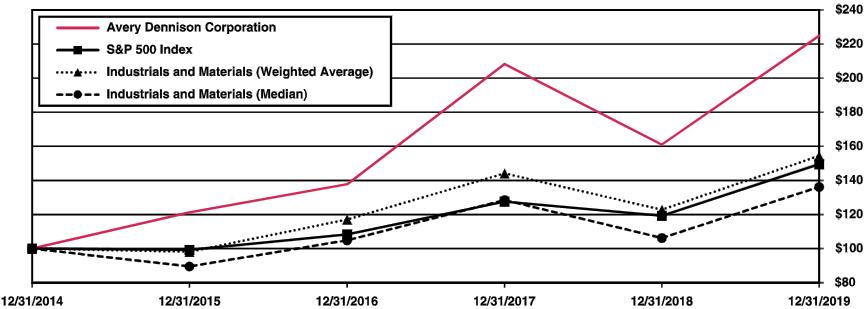Financing Activities
| | | | | | | | | | |
(In millions) | | 2019 | | 2018 | | 2017 | |
Net change in borrowings and repayments of debt and finance leases | | $ | (23.9) | | $ | (84.0) | | $ | (343.0) | |
Additional long-term borrowings | | | — | | | 493.3 | | | 542.9 | |
Dividends paid | | | (189.7) | | | (175.0) | | | (155.5) | |
Share repurchases | | | (237.7) | | | (392.9) | | | (129.7) | |
Net (tax withholding) proceeds related to stock-based compensation | | | (17.4) | | | (32.2) | | | 1.4 | |
Payments of contingent consideration | | | (1.6) | | | (17.3) | | | — | |
Net cash used in financing activities | | $ | (470.3) | | $ | (208.1) | | $ | (83.9) | |
Borrowings and Repayment of Debt
During 2019, 2018, and 2017, our commercial paper borrowings were used to fund share repurchase activity, dividend payments, capital expenditures and acquisitions, and for other general corporate purposes.
In December 2018, we issued $500 million of senior notes, due December 2028. These senior notes bear an interest rate of 4.875% per year, payable semi-annually in arrears. The net proceeds from this offering, after deducting underwriting discounts and estimated offering expenses, were $493.3 million, which we used to repay commercial paper borrowings. Prior to the issuance of these senior notes, we used commercial paper borrowings in the third quarter to fund our $200 million contribution to the ADPP in connection with its termination.
In March 2017, we issued €500 million of senior notes, due March 2025. These senior notes bear an interest rate of 1.25% per year, payable annually in arrears. The net proceeds from this offering, after deducting underwriting discounts and estimated offering expenses, were $526.6 million (€495.5 million), a portion of which we used to repay commercial paper borrowed to finance a portion of the purchase price for our acquisition of the European business of Mactac and the remainder of which we used for general corporate purposes, including other acquisitions.
Refer to Note 2, “Acquisitions,” and Note 4, “Debt,” to the Consolidated Financial Statements for more information.
Dividends Paid
We paid dividends of $2.26 per share in 2019 compared to $2.01 per share in 2018. In April 2019, we increased our quarterly dividend to $.58 per share, representing an increase of approximately 12% from our previous dividend rate of $.52 per share.
Share Repurchases
From time to time, our Board authorizes the repurchase of shares of our outstanding common stock. Repurchased shares may be reissued under our long-term incentive plan or used for other corporate purposes. In 2019, we repurchased approximately 2 million shares of our common stock at an aggregate cost of $237.7 million. In 2018, we repurchased approximately 4 million shares of our common stock at an aggregate cost of $392.9 million.
In April 2019, our Board authorized the repurchase of shares of our common stock with a fair market value of up to $650 million, exclusive of any fees, commissions or other expenses related to such purchases, in addition to the amount outstanding under our previous Board authorization. Board authorizations remain in effect until shares in the amount authorized thereunder have been repurchased. As of December 28, 2019, shares of our common stock in the aggregate amount of $644.7 million remained authorized for repurchase under this Board authorization.
Net (Tax Withholding) Proceeds Related to Stock-Based Compensation
In 2019, tax withholding for stock-based compensation decreased compared to 2018 as a result of equity awards vesting at lower share prices. In 2018, tax withholding for stock-based compensation increased compared to 2017 as a result of higher share prices for equity awards vesting during the year.
Approximately .3 million, .03 million, and .6 million stock options were exercised in 2019, 2018, and 2017, respectively. Refer to Note 12, “Long-Term Incentive Compensation,” to the Consolidated Financial Statements for more information.
Analysis of Selected Balance Sheet Accounts
Long-lived Assets
Property, plant and equipment, net, increased by approximately $73 million to $1.2 billion at year-end 2019, which primarily reflected purchases of property, plant and equipment, partially offset by depreciation expense and the impact of foreign currency translation.
Goodwill decreased by approximately $11 million to $930.8 million at year-end 2019 due to the impact of foreign currency translation.
Other intangibles resulting from business acquisitions, net, decreased by approximately $18 million to $126.5 million at year-end 2019, which primarily reflected amortization expense.
Refer to Note 3, “Goodwill and Other Intangibles Resulting from Business Acquisitions,” to the Consolidated Financial Statements for more information.
Other assets increased by approximately $204 million to $654.8 million and long-term retirement benefits and other liabilities increased by approximately $87 million to $421.4 million, primarily reflecting the recognition of operating lease assets and liabilities as the result of our adoption of the accounting guidance update described in Note 1, “Summary of Significant Accounting Policies,” of the Consolidated Financial Statements.
